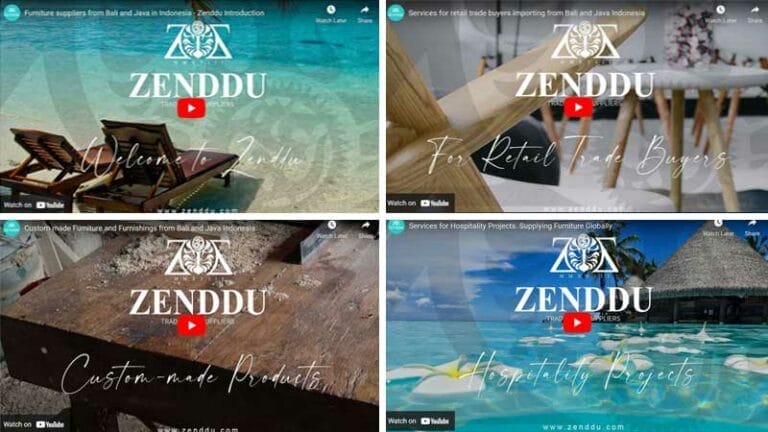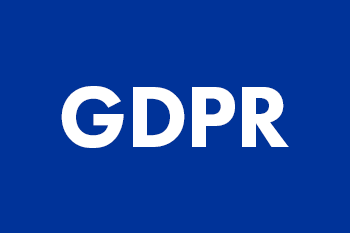GUIDE TO IMPORTING FURNITURE FROM INDONESIA
LEARN HUB
Import Export & Shipping Tips
IMPORT FURNITURE FROM INDONESIA
We can help you organise the shipment. When you order with us, we hold your hand through the whole export and shipping process.
We have a lot of customers who have never imported before or have limited experience importing from Indonesia.
This is a simple and easy guide. After reading, you will understand the export, shipping, and import processes.
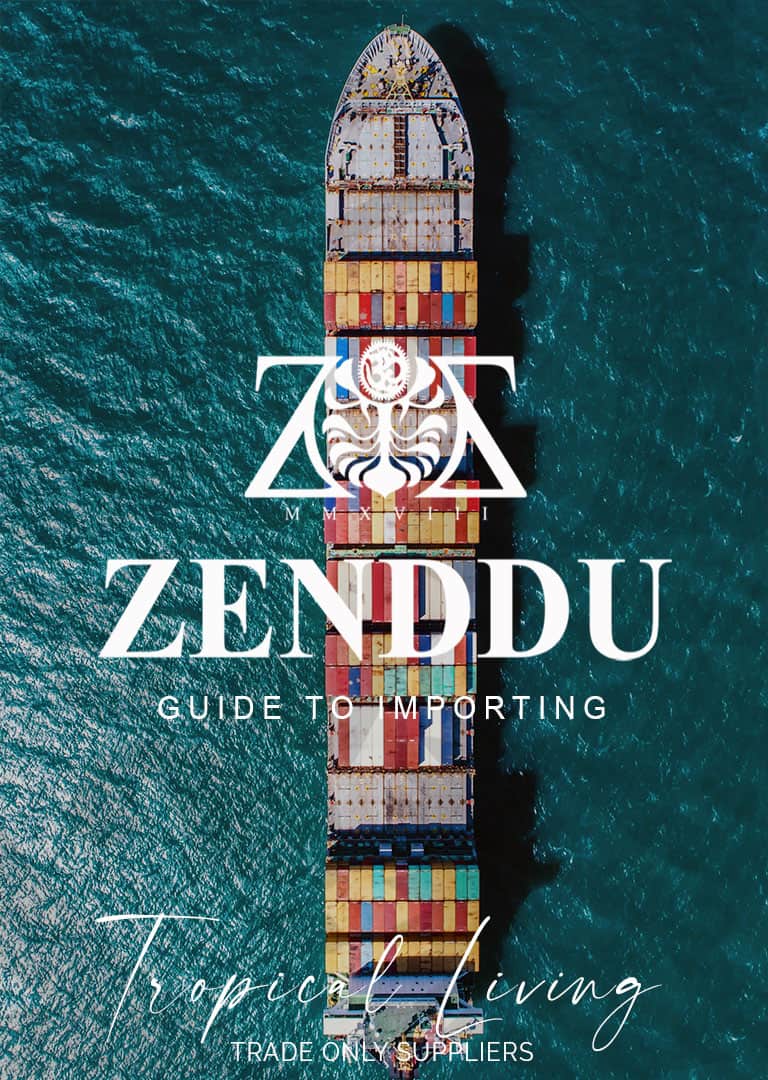
IMPORTING FURNITURE FROM INDONESIA - BALI AND JAVA
Here are some of the basics that will help you make the process of shipping from Indonesia to your destination country by sea or air easier.
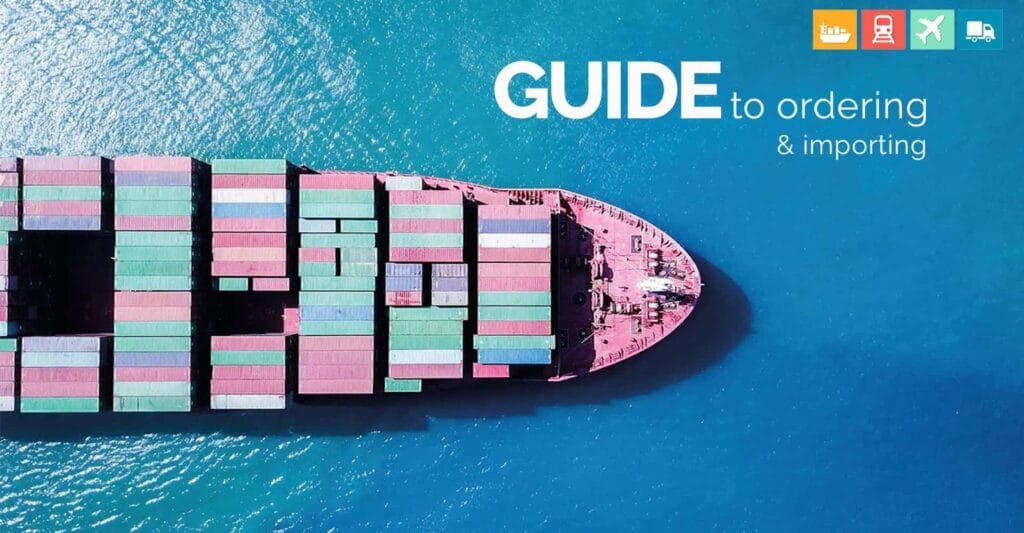
1. Calculate the CBM of your order
What is the CBM of your order?
CBM CONTAINER CALCULATION
Once you have decided what you want and have placed an order, the goods and quantities are fixed. We now have to calculate the CBM (cubic meter) size of the order. We will do this for you.
When we know the CBM, we will advise you on the best method of shipment. Whether LCL or FCL, if FCL, we will advise the best-sized container.
We will also tell you if the quantities need to be increased or decreased to best fit the suggested type of shipping.
Another question you may ask is, “Is there any minimum order for export?”
Our minimum order for exporting is USD 5,000
The minimum shipment is one to two cubic meters; this depends on the country of destination.
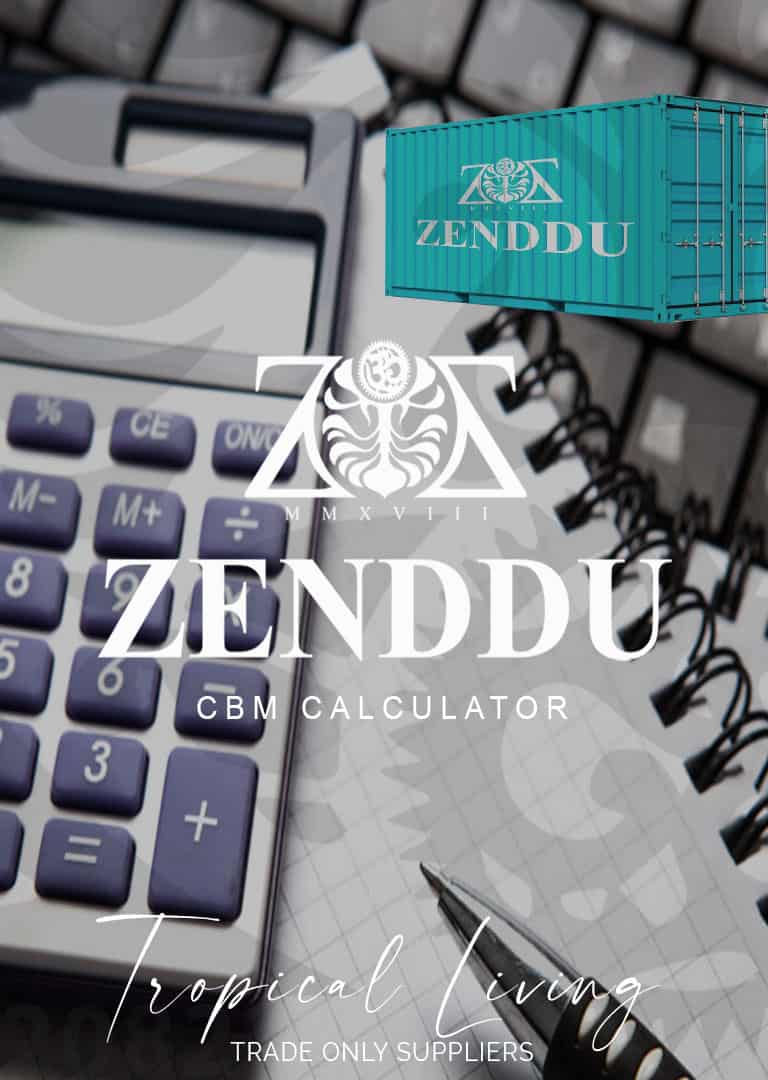
2. LCL and FCL for importing Indonesian furniture
There are two shipping types: LCL and FCL.
Singapore is the main shipping freight hub in Southeast Asia. All container ships leaving Indonesia first go to Singapore. These are known as feeder ships. All containers, whether LCL or FCL, are unloaded in Singapore and put on new container ships. These ships travel to your country or the next major shipping freight hub.
LCL Shipping
LESS THAN A CONTAINER
What does LCL mean?
LCL means (Less than a container)
Your order will be shared in one container with different consignees. The other consignees are not other Zenddu customers. They could be anyone exporting small quantities like you. Your order could be mixed with any type of product.
You can add as many cubic meters as you need to ship. You can ship in small quantities. But it’s more expensive per cubic metre than FCL.
The goods are packed by us. Then collected by the freight forwarder and loaded into a container by Indonesian port staff.
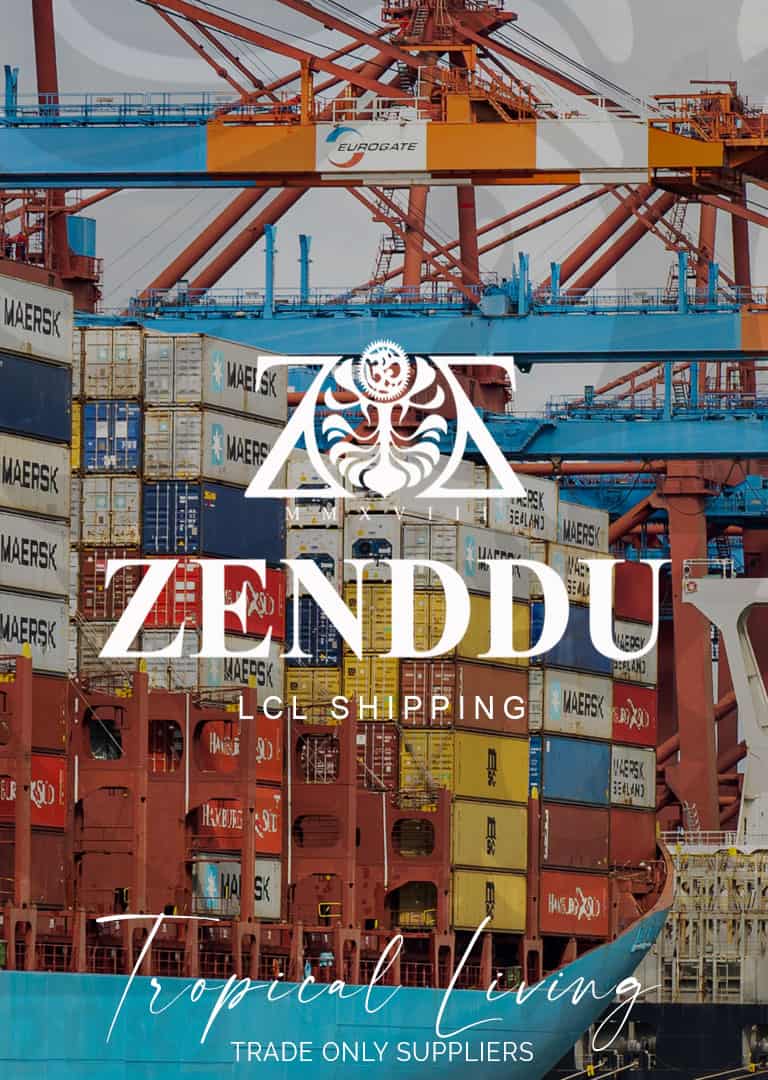
LCL, or less than container load, is a term used in sea freight to describe a method of shipping goods. It involves packing a smaller quantity of goods into a container mixed with other people’s products. Rather than filling a full container only for your order.
When you have a small amount of goods to ship, you can choose to use the LCL service instead of renting a whole container. Your goods are then consolidated with other people’s goods being exported that are also shipping in smaller quantities.
All of these goods are loaded into one container and transported. LCL service is a convenient option for customers who don’t have enough goods to fill a whole container and don’t want to pay for unused space.
It’s also useful for customers who don’t have enough storage space for a full container of goods.
However, there are some disadvantages to LCL shipping.
Loading and unloading can be slower, and there could be longer shipping times. Your goods are being handled by many different people.
Depending on the destination country,. Before they reach your port. They can be loaded and unloaded multiple times into different containers.
Every time the goods are moved to a new container,. They are loaded and unloaded by shipping port staff. How well they are loaded depends on the port staff in the various countries along the journey.
Port staff unload the container again. Trucking companies load them on their trucks to deliver them to you.
As you can imagine, all of this handling means there is a higher risk of the goods being damaged, lost, or stolen.
To try to avoid these damages, LCL shipments need to be packed better than FCL. We recommend the goods be packed in wooden crates. To protect them as much as possible from damage.
Also, LCL shipping costs are higher than FCL (full container load) per cubic metre. Due to the extra costs involved in combining and handling multiple small loads,
In summary, LCL shipping is a method of shipping goods by sea where smaller quantities of goods are combined into a single container. It’s a convenient option for customers with small amounts of goods. However, the packaging will need to be better than an FCL. This will cost you more money.
How well the goods are loaded into the container. It depends on how well the port staff loads them. It can be slower and more expensive compared to FCL shipping.
In our experience, if you are shipping over 15 CBM, it will be cheaper to change to FCL.
FCL Shipping
FULL CONTAINER LOAD
What does FCL mean?
(FCL means full container load.)
Your order is sent in one container only, with your goods inside.
There are 3 sizes of containers available in Indonesia. 20-foot container, 40-foot container, and 40-foot HC containers.
The container is delivered to our warehouse. Our staff loads the container. We make sure all the goods are fully secured in the container. We take photographs and videos to prove the goods were loaded correctly.
When the loading is finished, the container is locked and sealed with a special lock. The goods are now safe and secure.
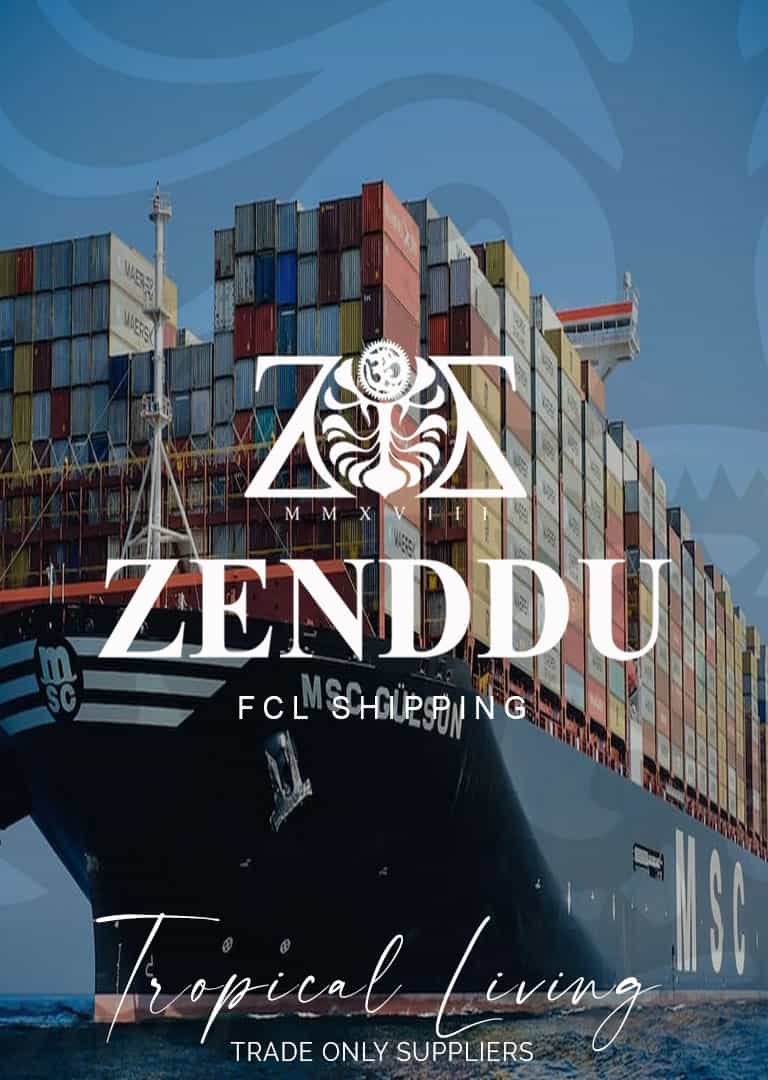
This seal has a serial number, which is added to the official shipping documents. This proves it wasn’t removed during transit.
The container cannot be opened for any reason by anyone except for customs officials, who have the right to open and inspect any goods entering or leaving their country.
Full container load (FCL) is a term used in sea freight transportation where a container is completely packed with goods from a single customer.
The container documentation is issued in the name of the receiver. Customers choose an FCL service if they have a significant amount of goods to ship and want complete control over the shipment.
However, FCL shipping can be more expensive due to renting the entire container, which requires sufficient storage space at the destination.
FCL shipping is faster and more efficient than LCL (less than container load) shipping, as there is no need to handle multiple small loads.
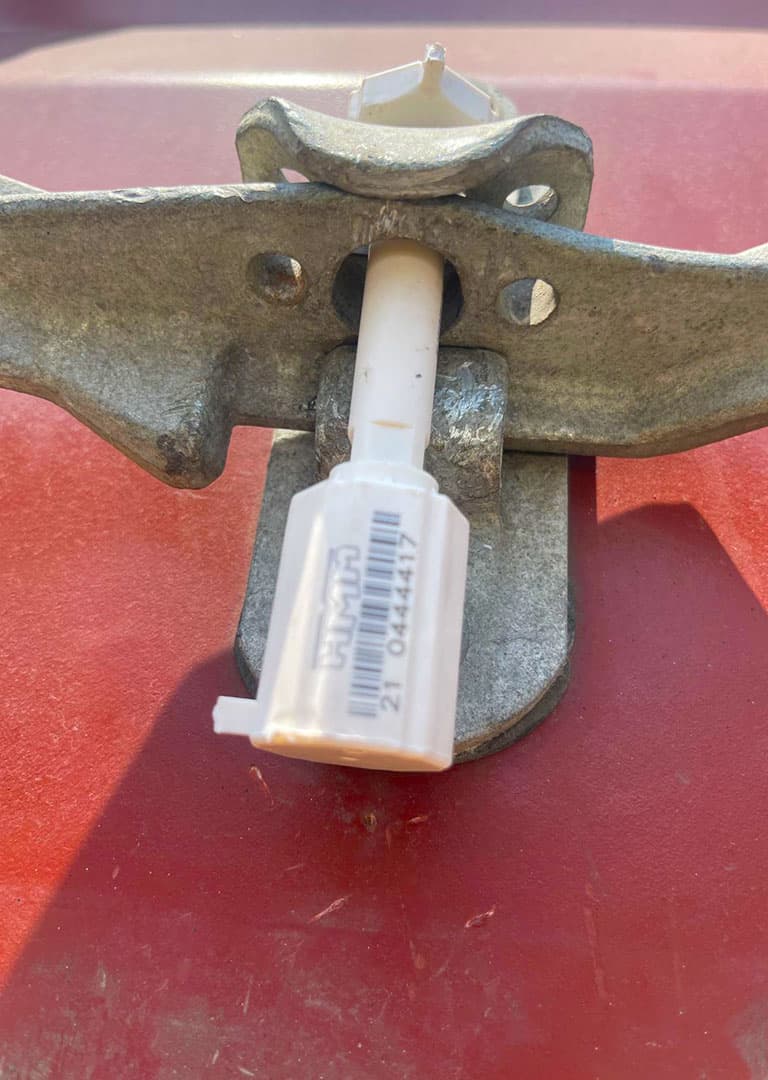
In summary, FCL shipping is a method of shipping goods by sea where goods are added to one container and never removed. It’s faster and safer than shipping LCL. The packing costs are cheaper. However, the overall cost will be higher as you are shipping a larger CBM than if you use LCL. However, the cost per cubic meter will be significantly less than LCL.
THE PROS AND CONS OF LCL AND FCL CONTAINER SHIPPING
LCL ADVANTAGES
- The overall cost is cheaper.
- Ideal for small orders.
LCL DISADVANTAGES
- Goods are more likely to be damaged, lost, or stolen.
- The packing cost is more expensive than FCL.
- The cost per cubic meter is more expensive than FCL.
- Shipping can take longer.
FCL ADVANTAGES
- It’s faster and safer.
- The cubic meter cost is a lot cheaper than LCL.
- The Packing cost is cheaper than LCL.
FCL DISADVANTAGES
- The overall cost is higher.
Our advice: If you can afford it,. Always ship FCL full container loads. It is faster and safer.
If your order is about 15 CBM, in our experience, it’s normally cheaper to ship a half-empty 20-foot container than send it by LCL.
3. What size container should you order?
What Size Container to use?
CONTAINER SIZES
As we already mentioned, there are 3 sizes of containers available in Indonesia. 20-foot container, 40-foot container, and 40-foot HC containers. All have different loading capacities.
We will calculate the CBM of your order for you. We will advise you on the best size container to order. Or how many containers do you need if your order fills multiple containers.
We will calculate any free space in the container. If there is free space,. You can then add more products. Increase the quantities of the items already ordered to fill the space. Or keep the original order quantities. It’s up to you to decide.
If you have too much product to fit in the container, we will advise you to reduce the quantity to make it fit.
The ocean freight cost is different for each container size.
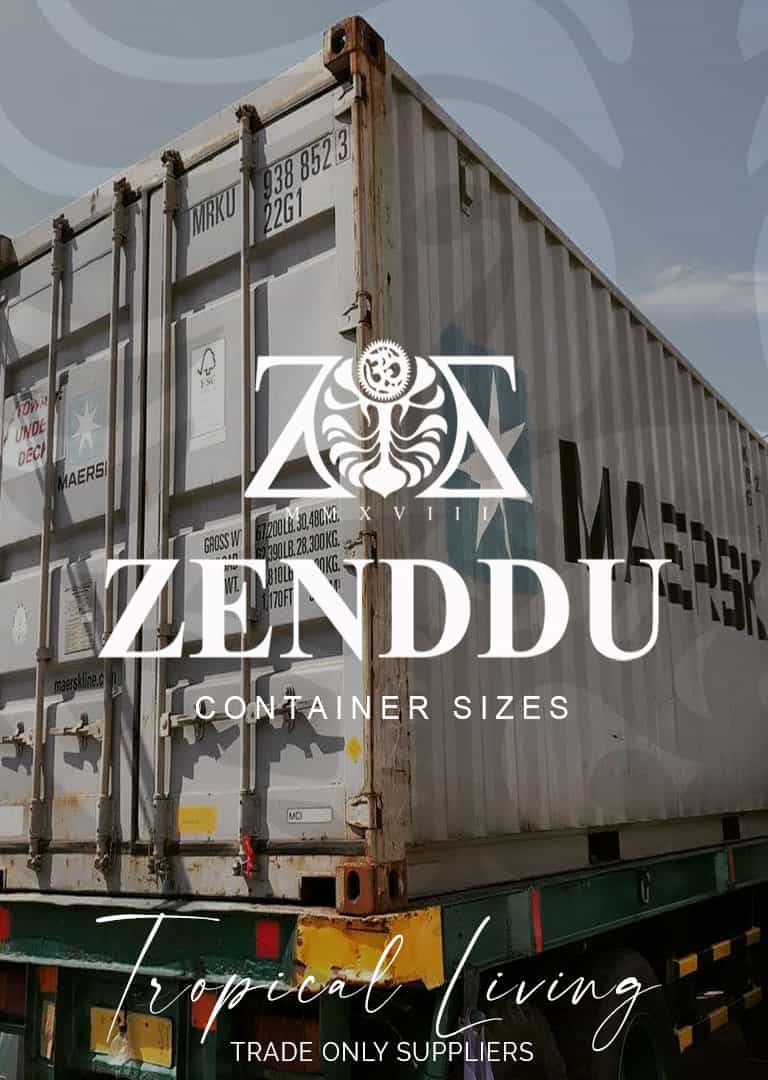
A 20ft container is the cheapest option but has the smallest space available inside. With 40ft and 40ft HC. A 40ft HC is the same width and length as a 40ft. The 40ft HC is just taller.
Sometimes a 40ft HC can be the same price as 40ft or very close in price.
As a general rule based on our experience.
A 20ft is the cheapest container to ship but the most expensive per CBM. A 40ft HC is the most expensive but the cheapest per CBM.
Other factors that can affect the ocean freight cost. Include the time of year the container is shipped. The location of the destination port. The global economic situation and global fuel costs. We will discuss this later.
Specifications and size of a 20ft shipping container
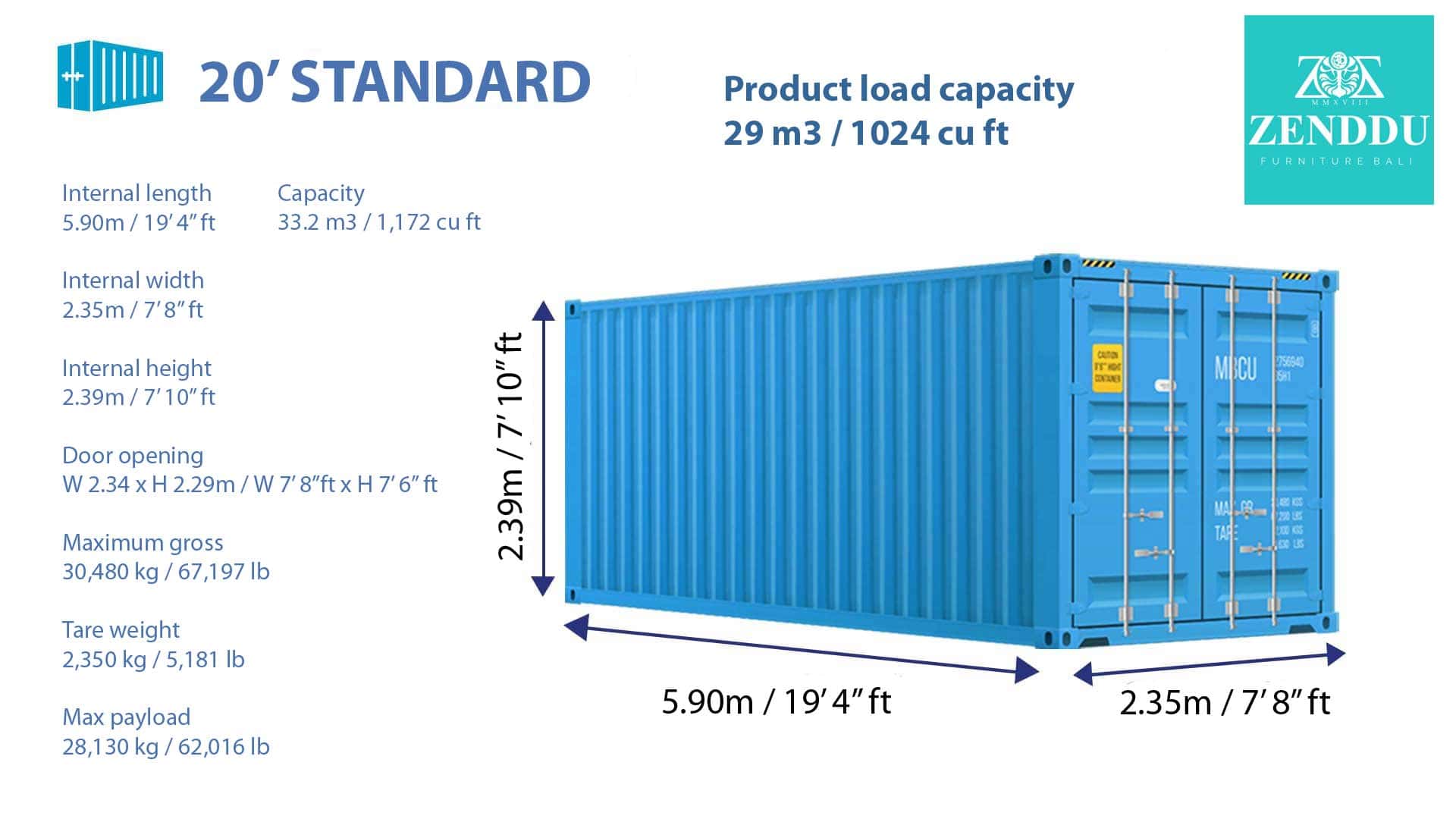
20 ft STANDARD CONTAINER
Internal length: 5.90m / 19’4″ ft
Internal width: 2.35m / 7’8″ ft
Internal height: 2.39m / 7’10” ft
Door opening: W2.34 x H2.29m / W7’8ft x H7’6″ft
Maximum gross: 30,480 kg / 67,197 Ib
Tare weight: 2,350 kg / 5,181 Ib
Max Payload: 28,130 kg / 62,016 Ib
Capacity: 33.2 CBM / 1,172 cu ft
Product load capacity: 29 CBM / 1024 cu ft
Specifications and size of a 40ft shipping container
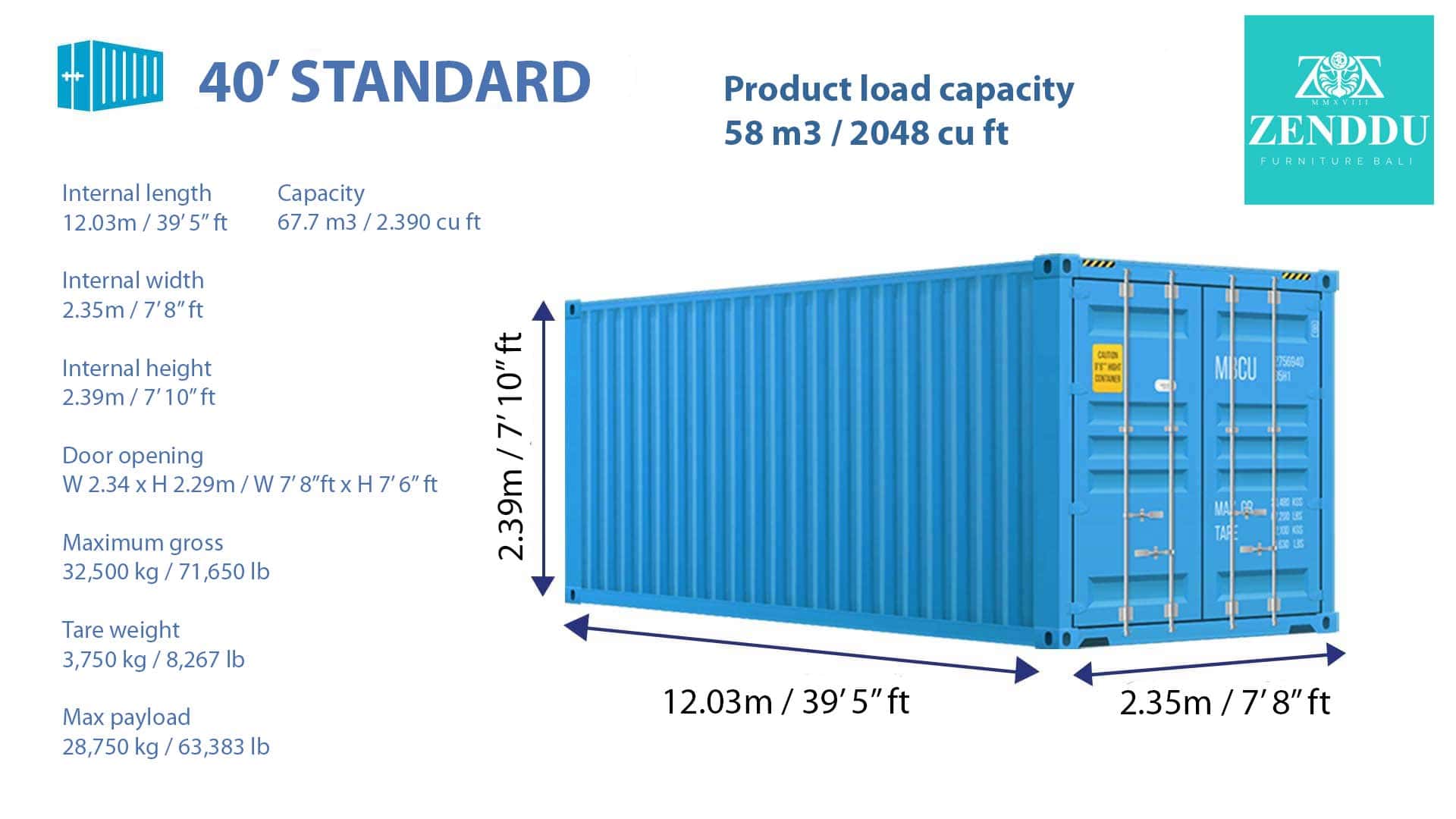
40 ft STANDARD CONTAINER
Internal length: 12.03m / 39’5″ ft
Internal width: 2.35m / 7’8″ ft
Internal height: 2.39m / 7’10” ft
Door opening: W2.34 x H2.29m / W7’8ft x H7’6″ft
Maximum gross: 32,500 kg / 71,650 Ib
Tare weight: 3,750 kg / 8,267 Ib
Max Payload: 28,750 kg / 63,383 Ib
Capacity: 67.7 CBM / 2,390 cu ft
Product load capacity: 58 CBM / 2048 cu ft
Specifications and size of a 40ft HC shipping container
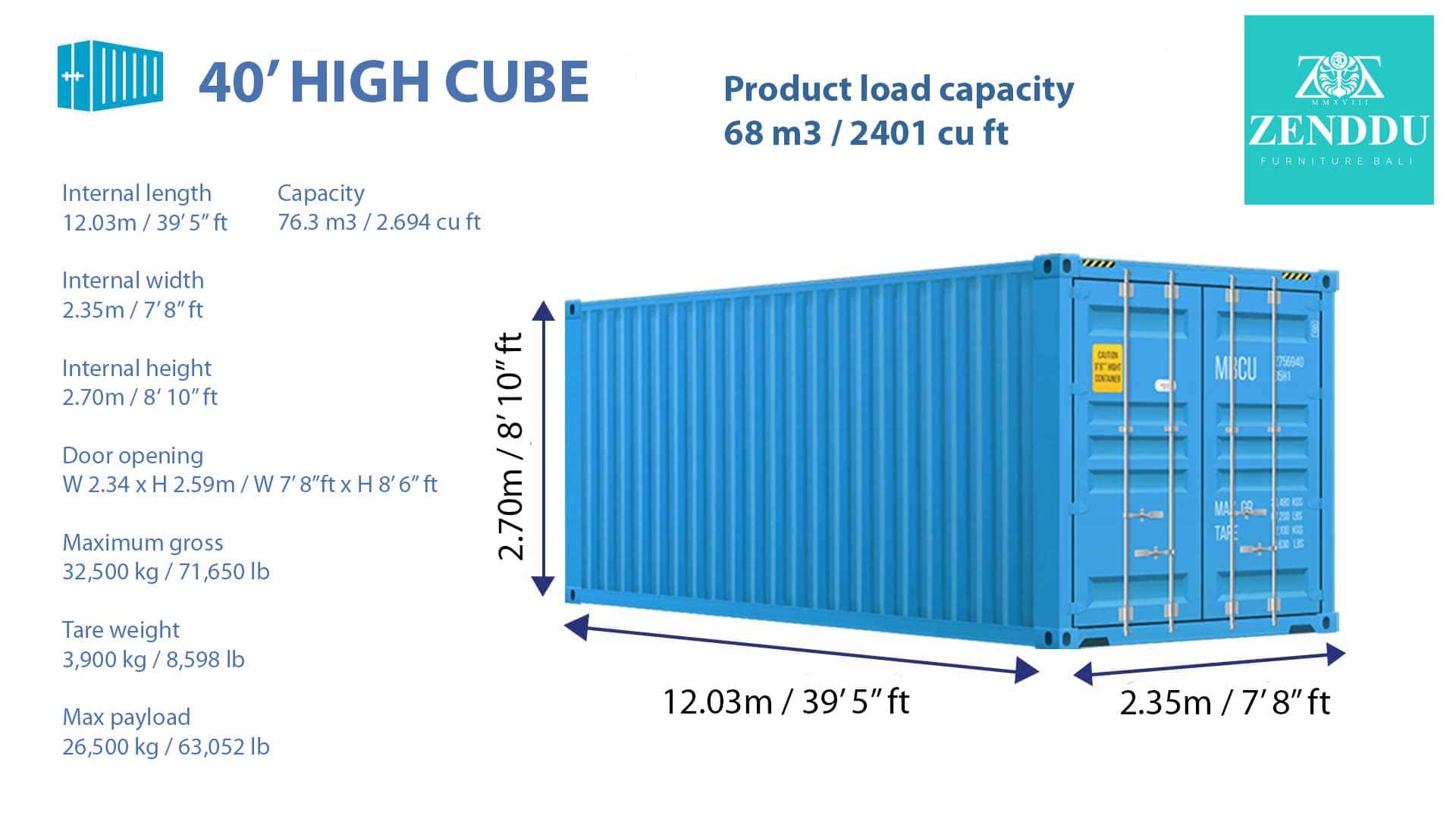
40 ft HC CONTAINER
Internal length: 12.03m / 39’5″ ft
Internal width: 2.35m / 7’8″ ft
Internal height: 2.70m / 8’10” ft
Door opening: W2.34 x H2.59m / W7’8ft x H8’6″ft
Maximum gross: 32,500 kg / 71,650 Ib
Tare weight: 3,900 kg / 8,598 Ib
Max Payload: 26,500 kg / 63,052 Ib
Capacity: 76.3 CBM / 2,694 cu ft
Product load capacity: 68 CBM / 2401 cu ft
WHY IS THE CAPACITY AND PRODUCT LOAD CAPACITY DIFFERENT?
You may have noticed the capacity and the product load capacity are different sizes.
Why is this?
It’s quite simple: you can’t load a container to its maximum capacity. Unless you fill it with a liquid,. There will always be spaces and gaps. The products are all different shapes and sizes.
A container is like a big box. Imagine you are moving house and packing all of your stuff into boxes. All the items are different shapes and sizes, and when you fill the box, there are always empty spaces between the items, and maybe at the top.
The same is true with loading a container with products. It is like a big puzzle. You never know if it will fit until you load it. Before you load, it’s just educated guesswork.
In our years of experience, we have loaded many containers. The product load capacity is closer to the actual physical capacity for our type of product.
If product capacity increases, it may or may not all fit.
4. What is Incoterms?
What does Incoterms mean?
INCOTERMS
INCOTERMS is the shipping terms between the buyer and seller.
INCOTERMS stands for International Commercial Terms. It standardized trade terms for shipping goods from one country to another. It defines the responsibilities, obligations, and delivery conditions between the buyer and seller.
INCOTERMS are developed by the International Chamber of Commerce (ICC) and are used to facilitate international trade.
There are 11 commonly used INCOTERMS, such as FOB, CIF, and EXW. Each of these specifies different delivery terms, payment obligations, and risk transfers.
By using INCOTERMS, buyers and sellers understand clearly who is responsible for what part of the process.
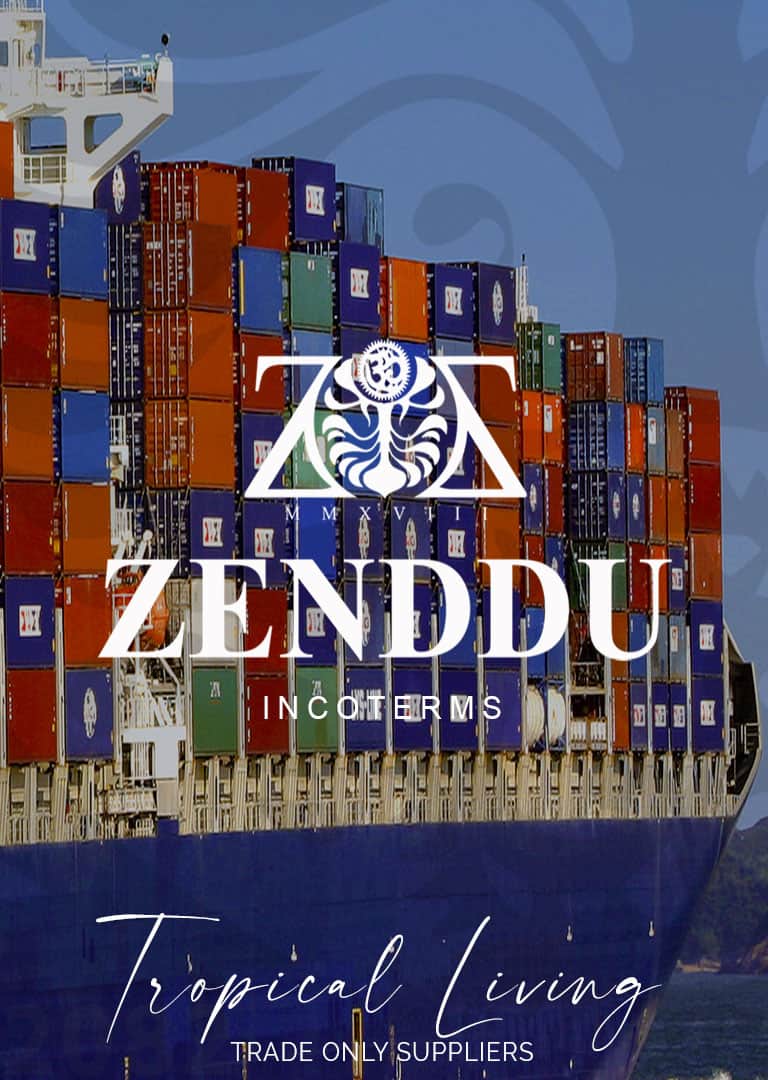
What does incoterm EXW mean? – Ex Works
Under EXW Incoterms, the seller is responsible for supplying the goods only. This means that all costs and risks pass to the buyer as soon as the goods are collected from the seller, such as the seller’s factory or warehouse.
Once the seller has packed and labelled the goods, they have completed their part of the order. It is now the buyer’s responsibility to handle transportation costs, obtain the necessary export documents licences, and take full responsibility for all associated risks.
What does incoterm FCA mean? – Free Carrier
FCA’s costs and risks are transferred to the buyer when the goods are handed over by the seller to the responsible carrier of the main transport.
If agreed, the seller must also load the goods. The seller has fulfilled his contractual obligation as soon as he has made the goods ready for export. The buyer is responsible for the transit and import, the costs of the main transport and the associated risks.
What does incoterm CPT mean? – Carriage Paid To
CPT states that the risks of the consignment remain with the seller until he has taken the goods to the carrier designated by him.
The costs are not transferred until the goods have arrived at their destination. The seller must therefore have concluded a contract of carriage to the agreed place of destination and pay these costs. The seller is responsible for the export. The buyer is responsible for the transit and import.
What does incoterm CIP mean? – Carriage And Insurance Paid To
CIP corresponds to CPT, but the seller must also take over shipping insurance for the transport from the time of acceptance by the first carrier to the place of destination and pay its costs.
What does incoterm DAT mean? – Delivered At Terminal
The seller undertakes to deliver the goods to a specific terminal (including a port quay, warehouse, container depot, etc.).
The seller has therefore fulfilled his obligation when he has prepared the goods for export and delivered and unloaded them at the agreed destination. As soon as the seller has made the goods available to the buyer for collection, the costs and risks are transferred to the buyer. The buyer is responsible for the import.
What does incoterm DAP mean? – Delivered At Place
With DAP, the seller has already fulfilled his obligation to perform, when he has cleared the goods for export and transit and makes them available without having to unload the goods himself. The unloading, costs and risks are with the buyer. The buyer is responsible for the import.
What does incoterm DDP mean? – Delivered Duty Paid
With DDP, the seller clears the goods for export, transit and import and makes them available to the buyer on the arriving means of transport ready for unloading at the place of destination. The Seller pays the costs and risks until the goods are ready for unloading.
What does incoterm FAS mean? – Free Alongside Ship
With FAS, the seller takes over the export and transport of the goods alongside the transport ship at the agreed port of shipment. The main transport costs and the transit and import are the responsibility of the buyer. If the goods are alongside the ship, both costs and risks are transferred to the buyer.
What does incoterm FOB mean? – Free On Board
FOB extends FAS by the transport of goods on board the ship.
What does incoterm CFR mean? – Cost And Freight
CFR relates to FOB, with the difference that with FOB the buyer pays for the ship transport and with CFR the seller. The risks are therefore transferred to the buyer after the goods have been loaded onboard the ship, but the costs are not transferred until the seller has had the goods transported to the port of destination.
What does incoterm CIF mean? – Cost, Insurance And Freight
CIF relates to CFR, but the seller must also take over sea transport insurance for carriage by sea.
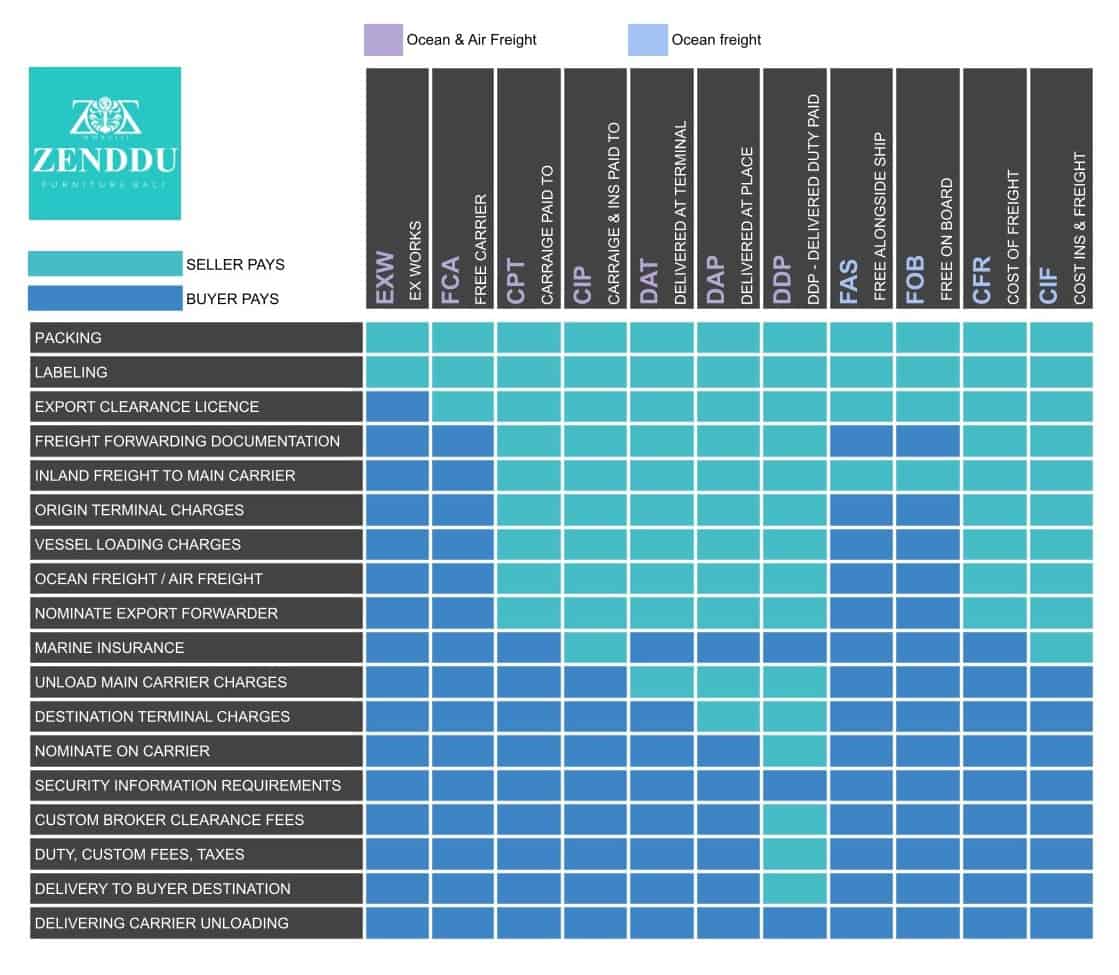
ZENDDU ONLY TRADES USING (EXW - EX WORKS )
Our sales prices for each product are Ex-works prices. You will see it clearly stated in each quotation and sales invoice after the total value. Ex Works is like a collection price from our warehouse.
The most common INCOTERMS used throughout the world are: EXW (Ex Works) FOB (Free on Board) and CIF (Cost Insurance and Freight)
Why don’t we offer other INCOTERMS?
It’s quite simple. With the individual price of each product, the extra costs of each INCOTERM are calculated and added to each product’s price. You must know all the costs in advance to be able to produce let’s say an FOB price list of your products. This would be the price for each product loaded onto the container ship.
If Product A has a sales price of USD 100, then it appears in an ex-works price list as USD 100
If the price list is an FOB or CIF Price list then the extra costs are calculated and added to the price of each product. For example, a FOB price could be USD 110 and a CIF price could be USD 120 for the same product.
The price of each item increases the more the seller is obligated to pay.
Most companies around the world normally only produce product price lists using one type of INCOTERM.
Knowing all the INCOTERM costs is easy if you are a factory based in one location. The goods are made in one factory. You know which is the nearest port. You know the port costs. You know the trucking costs and you know the container loading costs. Most factories will have a limited product range made in one location. So a FOB price is easy to produce.
OUR PROBLEM
We don’t work like a normal factory. All products are made to order. We hold no stock. We have over 12,000 products which are made in hundreds of different locations.
We have no idea what a customer will buy in the future.
- We don’t know what products a buyer will order.
- We don’t know how many of each they will order.
- Different quantities will affect consolidation trucking costs to our warehouse.
- We don’t know the location of the goods until they order. Different locations will affect consolidation trucking costs to our warehouse. Many products are made on different islands.
- We don’t even know which port the order will ship from in advance.
Let’s say you are a seller in the United States and you have products made in New York, Florida, California and Hawaii. You make to order. This is how Zenddu works. You can see it’s impossible to produce a FOB price.
We give the EXW – Ex Works price for each product. When you have finalised your order with the products and quantities. We calculate the consolidation and export costs as a separate cost for the TOTAL order. When the container is stuffed with the goods the risk passes to the buyer.
OUR PRODUCTION LOCATIONS.
You will see from the map below our production is in many locations. Even on different islands. Locations can be thousands of km apart. Each location can have many different sub-contractors.
Most orders are of mixed products from different locations. We consolidate them by transporting the goods in trucks by road and sea to our warehouse in Jepara. The order then goes to Semarang port.
If the order is from one location we will load the container at the location. Then ship it to the nearest port.
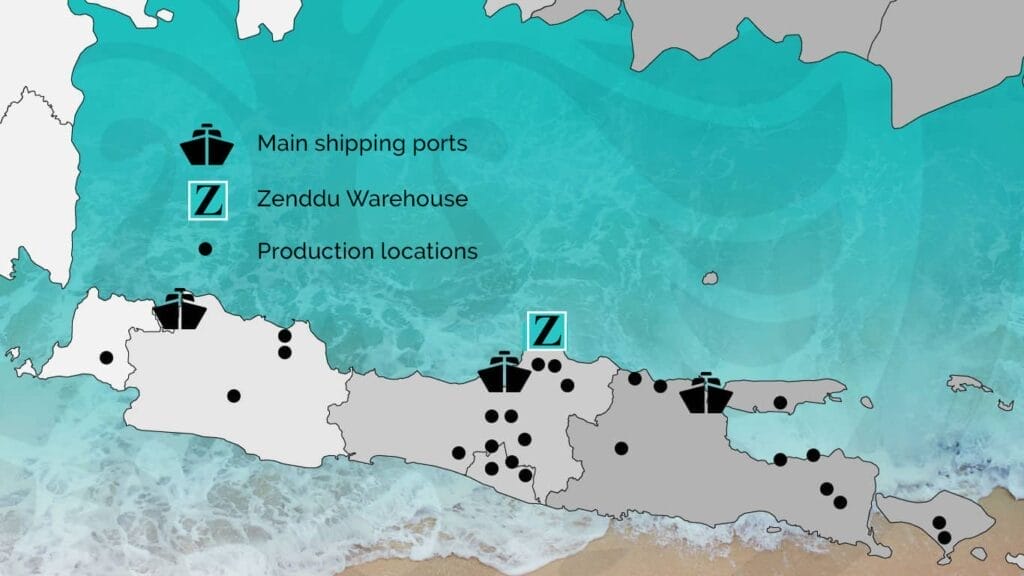
5. All about CUSTOMS HS CODES?
What is a HS Code?
HS CODES
HS code, which stands for Harmonized Commodity Description and Coding System.
It’s a numerical classification used by customs to categorize products. Understanding and using HS codes is important for international trade.
The system was developed by the World Customs Organization (WCO)
Customs officers use the HS code to permit or prohibit any product from entering or leaving their country.
You can obtain an HS code by going to your country’s government website. Simply provide a detailed description of the goods and you will receive the corresponding code.
Here is the official list provided by the Indonesian customs authorities.
It’s useful to know what HS codes are and why they are important.
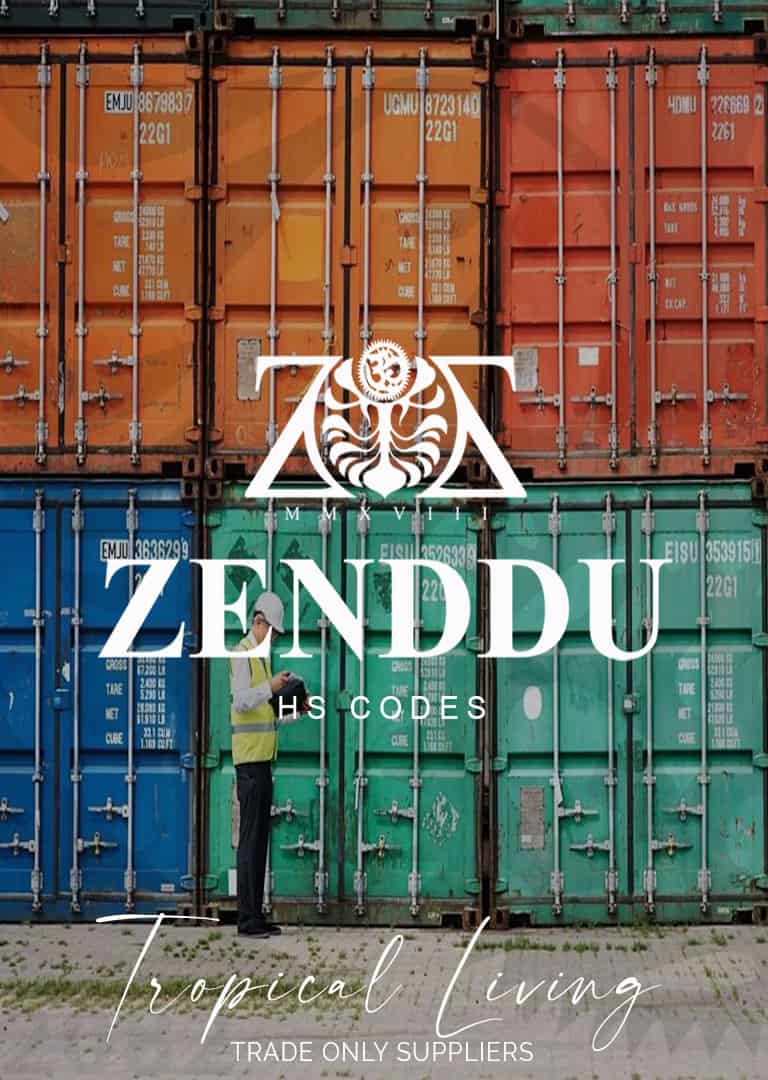
An HS code is a classification code consisting of six or more digits. It is used by customs to categorize the product being shipped to accurately determine taxes, duties, and any applicable restrictions.
Failure to include the HS code on the commercial invoice and other shipping documents can lead to incorrect tax calculations and potential shipment delays.
Using our freight forwarder they will find all the HS Codes. They will add them to the commercial invoice. You don’t have to do anything.
6. ABOUT SHIPPING LINES AND FREIGHT FOWARDERS.
Who are the shipping lines in Indonesia?
SHIPPING LINES & FREIGHT FORWARDERS
A shipping line is a large company that operates container ships for the transportation of goods and cargo.
These lines offer various services, such as ocean freight, air freight, rail freight, and distribution.
Shipping lines have their fleets of vessels and work with freight forwarding agents to move goods from one place to another.
These companies set the shipping charge for transporting your order. Nobody has control of the price. It’s fully controlled by the shipping lines.
Prices can increase and decrease at any time without notice. Factors influencing the price can be demand, fuel costs, location of the destination port and the global economic situation.
If your destination port is not popular then the price will be higher. If we ship a container to a remote island in Indonesia which is close to us it will cost more than sending it to Europe.
Shipping to The Seychelles or Reunion Island in the Indian Ocean will cost more than shipping to the USA. Even though the USA is twice as far.
During the pandemic prices increased by over 500%
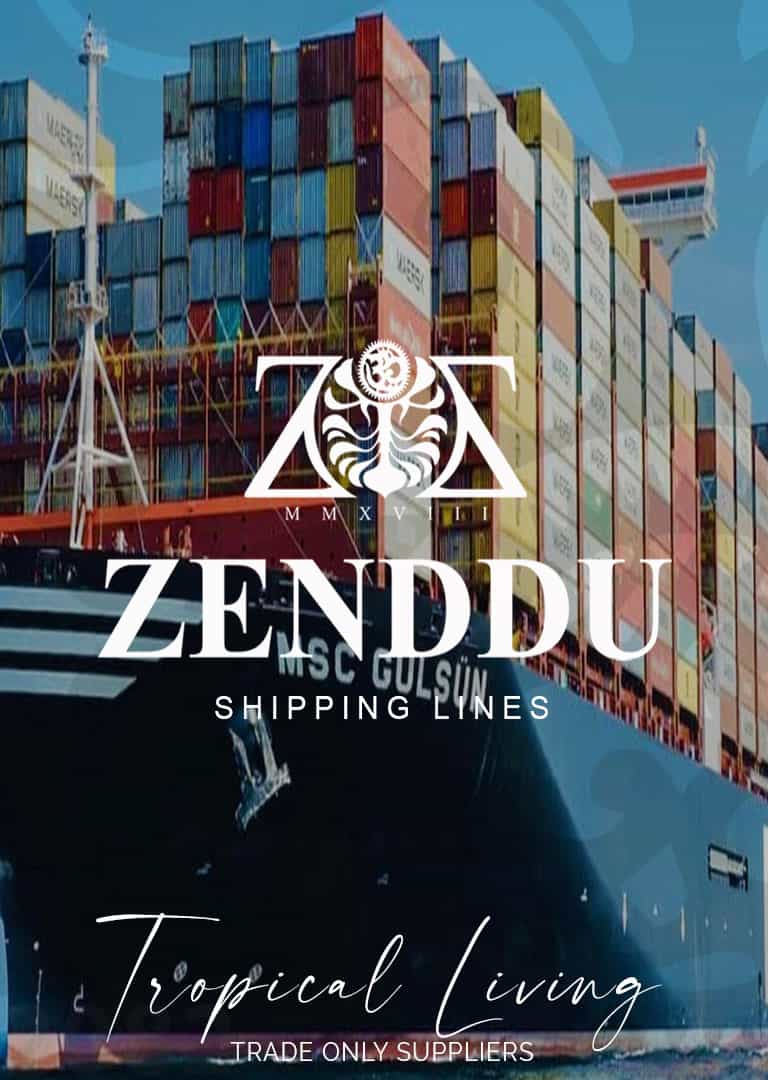
When demand is high. Prices will increase. There is a high and low season. There are no fixed periods for the seasons. As a rough guide:
High season: Is from around November until around mid-February. It normally ends after the Chinese New Year.
Low season: Any other dates.
THE ROLE OF THE FREIGHT FORWARDER
Freight forwarders are agents that act on your behalf to organise the shipping of your orders with the shipping lines. They make sure the paperwork is correct. They help with the import into your destination country.
Freight forwarders normally deal in one country and some even only one port. They are experts in the laws and import and export processes in their own country. They will partner with other freight forwarders in different countries to create an International network.
Let’s say you order from Indonesia to Florida. Our freight forwarder will handle the export and shipping. They pass over the import into the USA to their partner in Florida. They take care of all the management that you will need for the disembarkation of your order.
They will manage the payment of the taxes in your country. They can also take your products from the port of destination to your warehouse.
Shipping lines prefer to deal with freight forwarders who act as agents or intermediaries between the customer and the shipping line. The shipping lines are after a daily large volume of container orders. Which the freight forwarder can provide. The shipping lines are not interested in a few containers every year.
A large container ship can carry up to 20,000 containers.
The freight forwarder we recommend will contact all of the following shipping lines that operate from Indonesia. They will get the freight cost. When the next ship is leaving. What the shipping timescale is.
All shipping lines have different prices and different shipping times to the same destination. Some could be example 20 days and another 35 days. Some shipping lines may not go to your destination.
When they have all this information they will give you the best 3 options to select from.
SHIPPING LINES IN INDONESIA

MSC – Mediterranean Shipping Company
MSC, a Swiss global freight company, was founded in 1970. With a fleet of around 800 ships, MSC is recognized as one of the largest cargo companies worldwide.
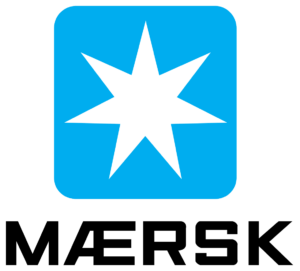
APM-Maersk
Denmark-based Maersk Shipping Line is a subsidiary of AP Moller-Maersk, known for its extensive fleet of container ships. Since its inception in 1904, Maersk Line has been a prominent player in international container shipping. Currently, the company has a fleet of around 675 ships
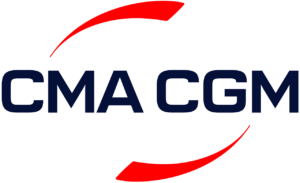
CMA-CGM
CMA-CGM is France’s leading container shipping company. CMA CGM was established in 1978 through a series of mergers among existing shipping companies. The company has a fleet of around 624 ships operating in over 150 routes globally.
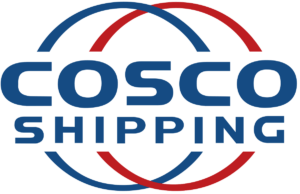
COSCO – China Ocean Shipping Company
COSCO, also known as the China Ocean Shipping Company, is a prominent conglomerate that specializes in container shipping. With a fleet of approximately 490 ships, COSCO operates in over 40 countries around the world.

Hapag-Lloyd
Hapag-Lloyd, a prominent international shipping company, is based in Germany and is known for its excellent reputation. It was formed in 1970 through the merger of the Hamburg-American Line and the North German company Lloyd. With a fleet of around 266 ships, Hapag-Lloyd continues to be a leading player in the shipping industry.

ONE – Ocean Network Express
Formed on July 7th, 2017, One Network Express is a fusion of three prominent shipping firms: MOL, “K”-Line, and NYK.
Operating out of Japan with its headquarters in Singapore, ONE was established to enhance its services in Asia, Latin America, and Africa.
This collaboration brings together the fleets of these three companies, with a total of around 231 ships.

Evergreen Line
Founded in 1968, the Evergreen Marine Corporation is a shipping conglomerate headquartered in Taiwan. It has an expansive global presence, with offices established around the world. The company operates a fleet of around 211 ships, showcasing its substantial operational capacity.
As of 2024, Evergreen Line has the world’s largest container ship in its fleet.

HMM
Is a leading container shipping company based in South Korea. HMM Co. LTD. is one of the top 10 shipping companies in the world, moving the largest portion of South Korea’s exports. With a fleet of around 70 ships

Zim Integrated Shipping Services Ltd
Zim Integrated Shipping Services Ltd. is an Israeli global cargo shipping company. ZIM was established in 1945. Presently, ZIM operates with a fleet of around 124 ships.
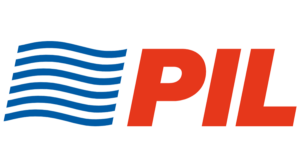
Pacific International Lines (PIL)
PIL is headquartered in Singapore and is one of the biggest shipowners in the Southeast Asian region. It operates around 88 ships that call at more than 500 locations in 100 countries across the world.

SITC International Holdings Co.Ltd
Established in May 1991, SITC is a prominent shipping logistics enterprise headquartered in Hong Kong. With a fleet of around 102 ships, the company operates in 75 service routes that encompass 17 countries and 76 major ports across China, Korea, Japan, Vietnam, Singapore, Russia, India, and more
7. ABOUT EXPORTING furniture FROM INDONESIA.
How to Export from Indonesia
EXPORT PROCESS
As we have already mentioned Zenddu supplies goods on an Ex-Works basis. We sell goods to you in Indonesia for you to collect.
This means we are the Seller of the goods.
We are not the Shipper of the goods.
We are not the Exporter of the goods.
We will help organise and advise about the export process. We make no money on exporting or shipping. We help as part of our service to our buyers.
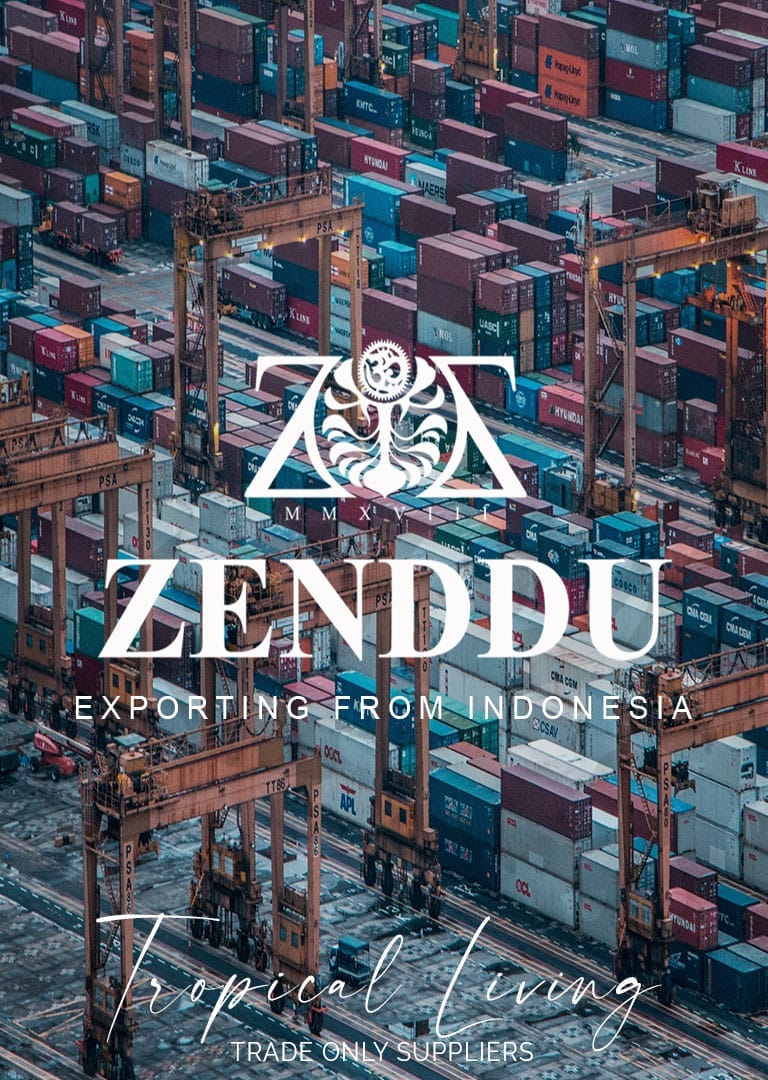
Imagine you buy from a wholesaler in your country. You order the goods and pay for them. The wholesaler gives you a sales invoice. You take the goods away. The order is finished.
Zenddu works in the same way as the wholesaler.
If you take the goods to your warehouse or shop. Send them to your customer. Even ship the goods overseas. That is your choice and for you to organise. It’s nothing to do with the wholesaler who just sold you the goods.
If you send it overseas. The wholesaler won’t be involved in exporting or give you an export commercial invoice and packing list. They just sold you the goods. That’s all for you to sort out.
As most of our customers are overseas. We will help you by putting you in contact with the right companies that can export and ship for you. You pay them directly.
WHAT WE ORGANIZE
We will organize the following:
- Provide a sales invoice for the order.
- Packing – All bulk packing included (Extra charge for crating. Paid by buyer)
- Collection of goods from sub-contract manufacturer(s)
- Trucking by road or sea to our consolidation warehouse (Paid by the buyer)
- Manpower charge to load and stuff container. (Paid by buyer)
WHAT THE FREIGHT FORWARDER MUST ORGANIZE
The freight forwarder must organize the following for EXPORT:
- Delivery of container to collection address.
- Delivery of container to shipping port.
- Custom Clearance.
- Export License (Under Name). #
- V-Legal Wood Verification Certificate. #
- Commercial Export Invoice. #
- Packing List. #
- Standard Fumigation and certificate if required by the destination country.
- AQIS Fumigation & Certificate if required by the destination country.
- Superdry in the container.
- ISPM #15 – Approval stamp for all wooden packaging & pallets if required.
- Phytosanitary Certificate if required by the destination country.
- COO ( Certificate of Origin ).
- Loading Goods onto Shipping Vessel.
- Container Seal Fee.
- VGM – Verified Gross Mass of the container.
- As we mainly ship full containers. We don’t know the individual weight of each item as it’s not necessary because export documents only need the total gross and nett weight of the container. If you want to know the weight of each item then you must advise us in advance. If you want to know this we will charge you for the rental of industrial scales. We don’t supply this information as standard.
# These must be produced by an Indonesian company.
The freight forwarder must organize the following for FREIGHT COSTS:
- Courier Document Fee sent to Consignee.
- THC – Terminal Handling Charges.
- Bill of Lading Fee.
- Freight Forwarder Admin Fee.
- Channel Port Fee.
- Ocean Freight Shipping Costs.
If you use our freight forwarder they can provide ALL of the documents required.
If you use your freight forwarder they will probably be in your own country. You can run into problems. We don’t recommend this. Unless they are experts in exporting from Indonesia.
The documents marked with a #
- Export License (Under Name). #
- V-Legal Wood Verification Certificate. #
- Commercial Export Invoice. #
- Packing List. #
Most overseas freight forwarders don’t understand that they have to produce these documents. This is not a normal practice in the global shipping industry. But it is very common in Indonesia. Tens of thousands of companies get goods exported this way. It’s normal here.
The only company that can produce these documents is an Indonesian company. So if your freight forwarder is not Indonesian or their Indonesian partner cannot produce the documents,. You cannot use them.
We recommend our freight forwarder, as you will have no problems. When customers use their freight forwarder, it’s always a major headache for everyone.

8. ABOUT SHIPPING INSURANCE
Why shipping Insurance is Important
SHIPPING INSURANCE
As we have sold the goods to you on an EXW basis. Once the container or order is collected from us. You are responsible for any goods damaged, lost, or stolen in transit.
We recommend all buyers take out shipping insurance.
Goods arriving damaged can be more common than you think.
Here are some of the main reasons goods can arrive damaged or even get lost.
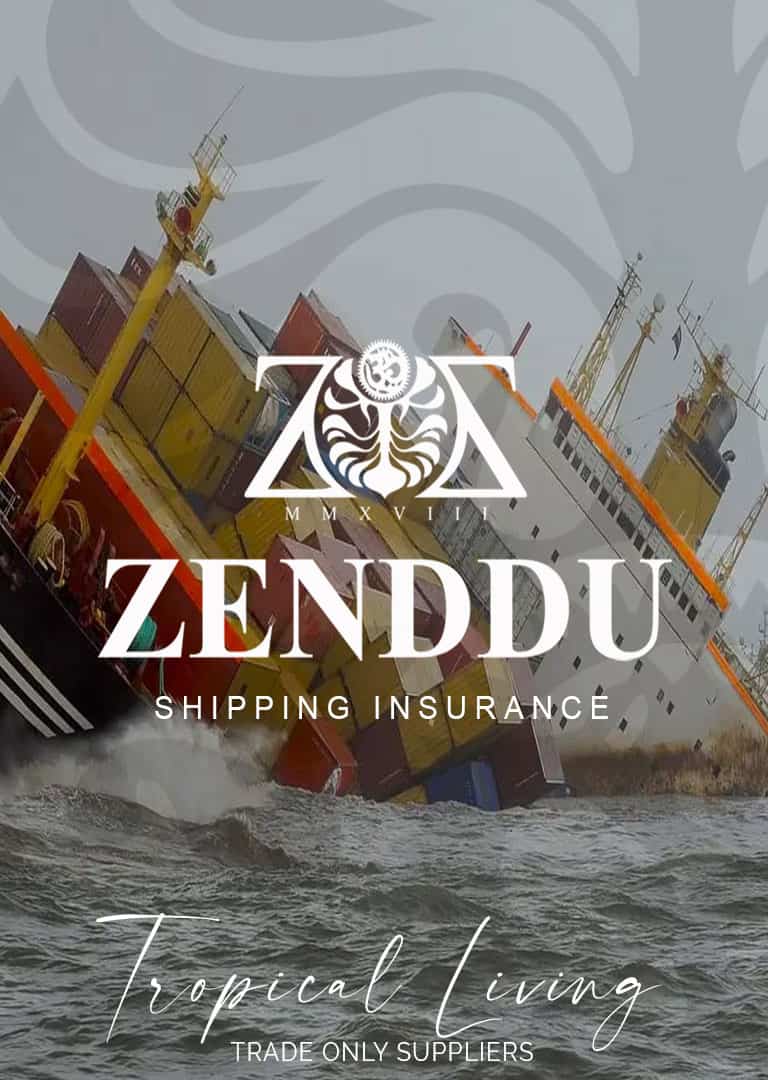
CONTAINER DAMAGE
Container damage happens when the structure of a container is damaged. It can be a minor dent on the container wall to containers getting lost at sea, anything can be categorized as container damage.
If the container is damaged it will probably affect the goods inside the container. According to the UK P&I club, almost 11% of the total cargo damage claims filed in a year are due to the containers getting lost overboard.
How often do containers get damaged?
Freightwaves reports that approximately 25% of containers passing through US ports are damaged at various interchange points. These damages can occur due to factors like natural disasters, errors by humans, or malfunctioning machines.
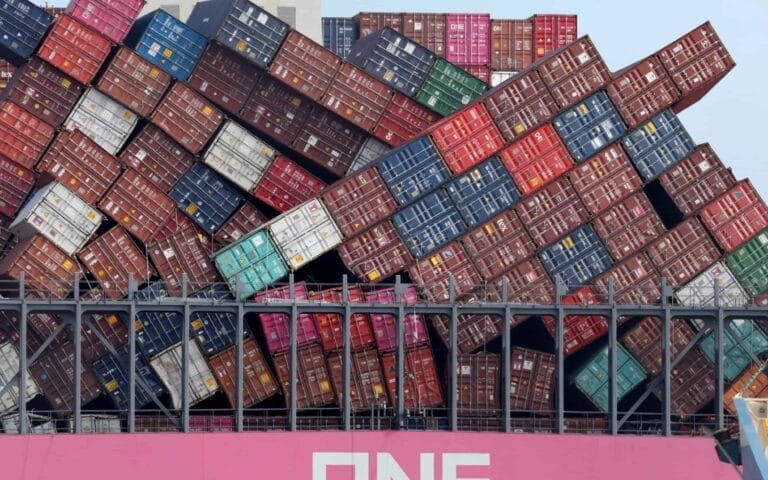
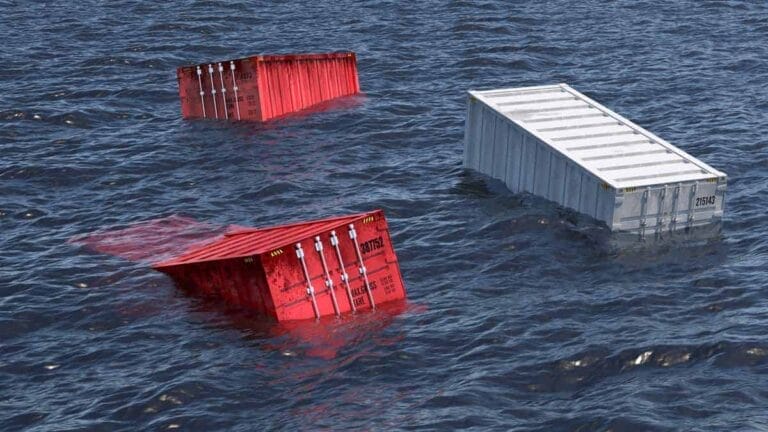
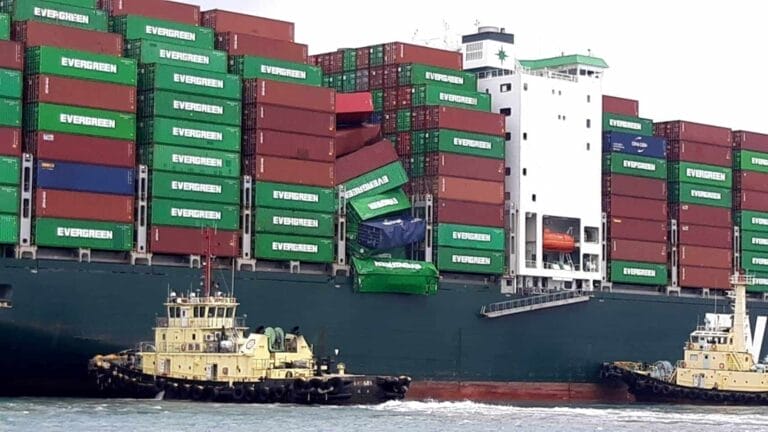
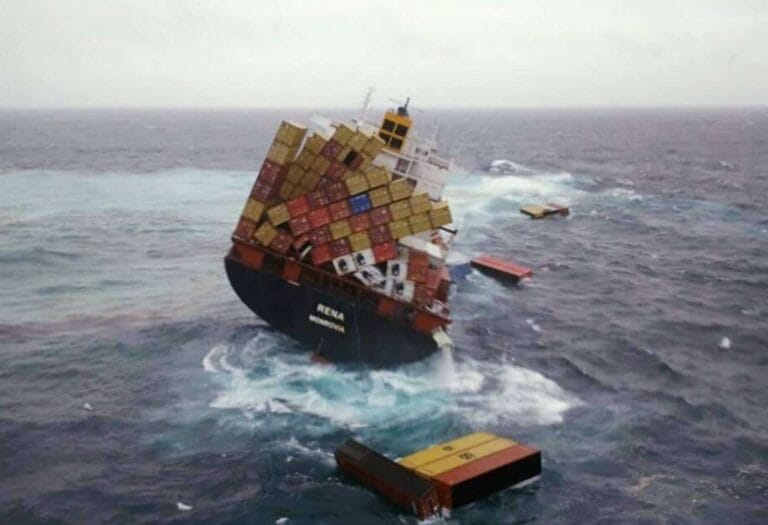

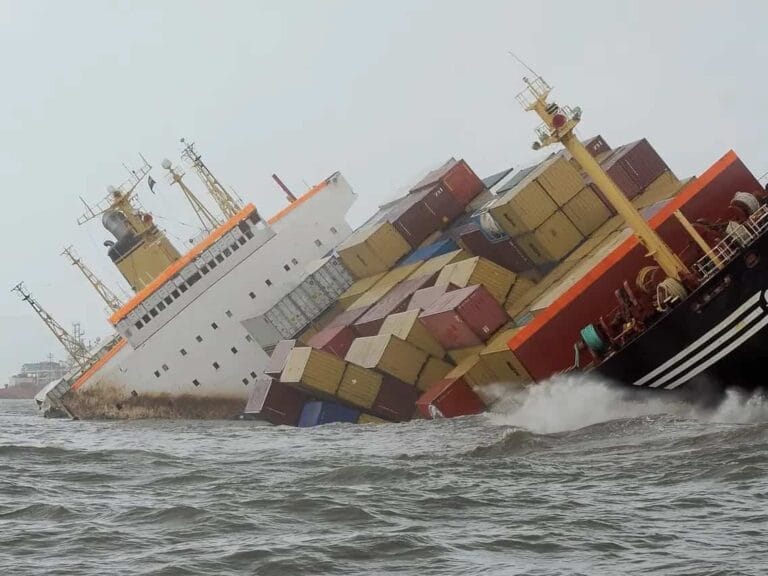
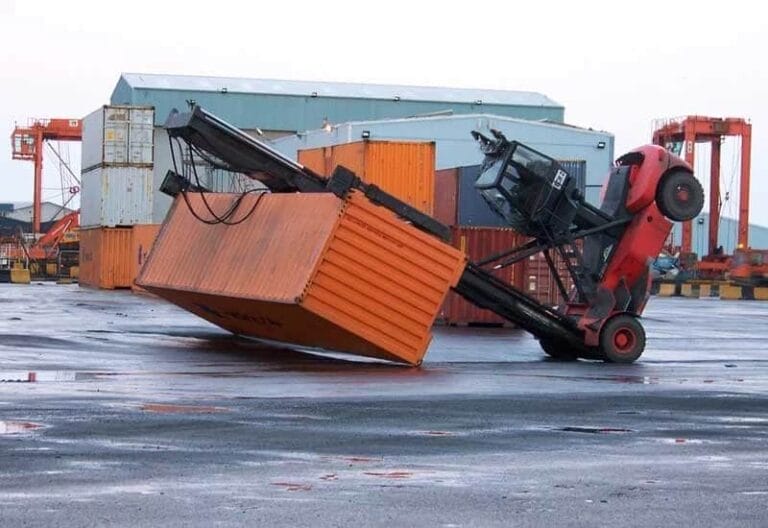
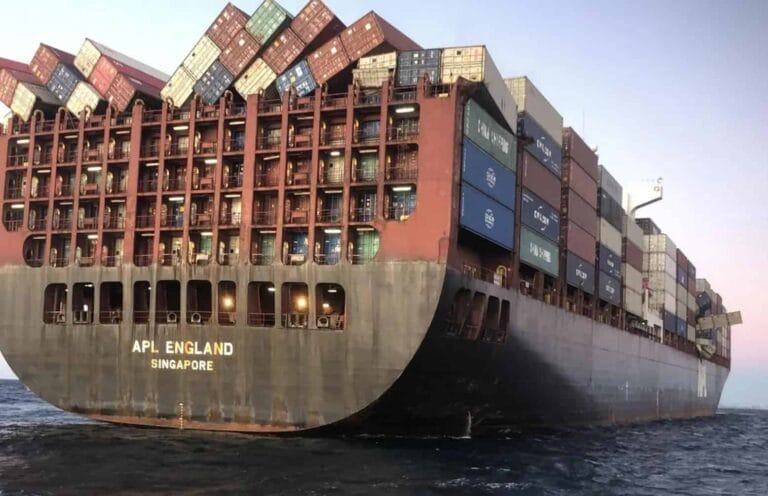
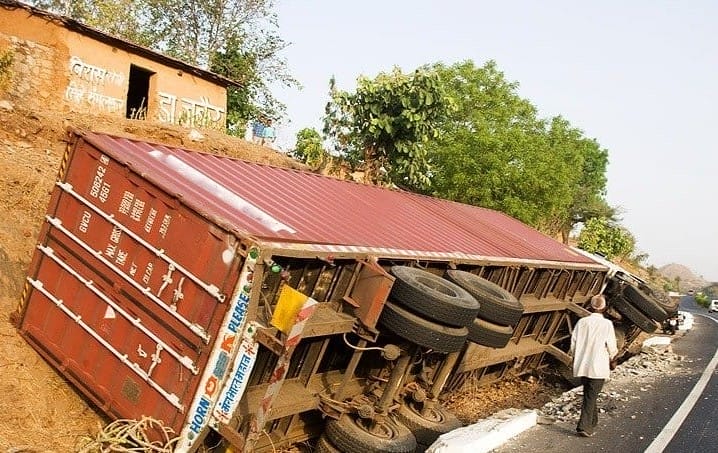
VIBRATION DAMAGE
Consider this – starting from the moment your products are loaded onto a container, they are subjected to intense vibrations until they reach your location.
Trucks, trains, aeroplanes, and ocean vessels all vibrate to some extent. This continuous vibration can lead to damage or displacement of cargo, resulting in significant scratches or broken components.
MOISTURE-RELATED DAMAGE & CONTAINER RAIN
Moisture damage is a significant risk that can harm goods stored in containers or during their journey at sea.
Trade Risk Guaranty reveals that around 10% of all container shipments are rendered unusable due to moisture-related damage.
The main moisture threat comes from moisture present in the air and cargo. Changes in temperature and humidity during the journey can convert this moisture into liquid. This drips inside the container onto the products and is known as container rain.
Container rain occurs when cooling temperatures cause moisture vapour to condense into water droplets. This condensation typically accumulates on the coldest surfaces inside the container, like the ceiling.
As a result, when the droplets fall onto the goods below, it creates container rain. This condensation can also be collected on the container walls and the goods themselves.
This water is what will cause mould, corrosion, and other types of physical damage to the products.
REGISTER NOW TO SEE ALL OUR PRODUCTS
Please complete our catalogue registration form. To get access to our online catalogue. With our full range of over 12,000 products.
You will get immediate access. To access in the future visit our homepage www.zenddu.com and log in using the password provided at any time.
We will also send you information on any new products and the latest industry news.
Our Friendly AI Support
CHAT WITH ZENA
Meet Zena, our AI Customer support. She is available 24/7. She speaks over 95 languages, you can chat with her in any language.
She can answer basic questions like Do you have a catalogue and price list? or technical questions. Like the specification of any raw material, or the cubic capacity of a container. If you planning on visiting Indonesia she can also suggest places to visit during your stay.

If you ask her personal questions like, How old are you? Do you like your job? What’s your salary? Do you have a boyfriend? Who is Zendy? She can be a little sarcastic, depending on her mood.
She is very knowledgeable and friendly. Chat with her! Use the chat button in the bottom right-hand corner.
FURTHER READING
USEFUL LINKS
World Trade Organization (WTO)
International Trade Centre (ITC)
United Nations Conference on Trade and Development (UNCTAD)
Asia-Pacific Economic Cooperation (APEC)
International Trade Administration
European Free Trade Association (EFTA)
Association of Southeast Asian Nations (ASEAN)
Indonesian Ministry of Trade (Kementerian Perdagangan)
Indonesian Directorate General of Customs and Excise (Bea Cukai)
Watch our videos with information about us, our services to retailers and for hospitality projects, what custom made products we can make and our quality control processes.
YOUR SUPPLY PARTNER IN INDONESIA
Looking for new products for your store or next project?
Useful link: Indonesian Ministry of Trade
